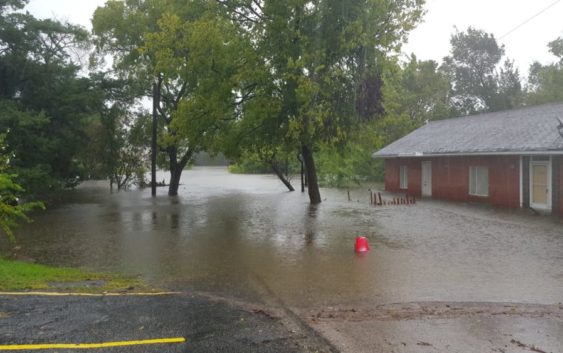- NC Gov. Stein pledges continued Hurricane Helene recovery support in 100-day address
- Austin adopts new map that greatly expands area at risk of wildfire
- CenterPoint Energy accelerates infrastructure improvements ahead of hurricane season
- Carolina Hurricanes playoff tickets go on sale Thursday
- Ask the Meteorologist: Why do tornadoes target Tornado Alley, Dixie Alley?
Flooding in Houston disproportionately affects people of color, study finds

Listen
A pair of recent studies from Rice University looked at the different ways floods can impact residents and homeowners.
One of the studies focused specifically on Houston and found that Black residents were disproportionately affected by multiple issues after flooding by Hurricane Harvey. The second study looks nationwide at where homeowners tend to relocate after their homes flood.
Jim Elliott is a Rice professor of sociology and was involved in both studies. He joined Houston Matters with Craig Cohen on Tuesday to discuss the studies. He said research tends to focus on how many homes flooded, but they were interested in other ways residents might be impacted by a storm. So they asked deeper questions: did they have impacts to their employment, did they lose money or wages in the storm, was their health impacted from the storm, and did they lose transportation in the storm?
“But then we are also interested in these support networks. Did folks experience impacts from Harvey to their close personal friends and family, even if they themselves didn’t experience these impacts?” Elliott said. “So all together, we are thinking about, you know, how are the various ways that people get impacted by these events, including to their social networks? And then thinking about what the implications might be.”
The study found that marginalized communities, Black residents in particular, were much more likely to be affected through employment, transportation and house flooding.
“So all these things add up. But then also, there was the case that they were more likely to have their personal networks impacted,” Elliott said. “So friends and family who also experienced a number of different impacts.”
Elliott said there were similar disparities in the Hispanic communities of the Houston area, but they differed in the impact of flooding. Hispanic residents tended to have a higher likelihood of homes flooding.
“We all know people, I think, who were affected adversely, but when you peel back and look at the data, it really shows that certain communities were really more impacted in a more extensive sort of set of circumstances,” Elliott said.
More affordable housing tends to be in flood-prone areas, and those areas tend to be more heavily populated by people of color. But Elliott said this can impact Houston as a whole in two ways. The first is to think about how the community prepares and responds to these events.
“There is a strong sort of push these days, I think rightfully so, to prepare communities and to think of close friends and family, in an area as support networks that can help people rebound from these events,” he said. “But at the same time, if we’re finding that certain communities have those support networks, are more likely to be impacted themselves, those sources of support can be more sources of stress. So what that means, in terms of how we think about things is that, when we think about certain communities being more resilient; their homes flooded, but they’re coming back. And other communities, maybe that’s not the case, we need to think of that resilience, maybe in terms of some hidden impacts that we’re not seeing across those communities.”
The second impact is politically, Elliott said.
“Just think about what that means for political divisions and the ability to start to come together around certain flood control policies,” Elliott said. “If certain people are having more extensive impacts, and some fewer, and that’s influencing how you look at local government responsibilities, and what should be done. That can be a real cleave and sort of public sentiment and therefore the ability to move forward effectively.”
The second report looked at FEMA’s home buyout program to buy out repetitively flooded homes. Elliott said the report focuses more on properties, not people, and looked at how people manage their own retreat after a flood incident.
“So the effort was to really do the hard work of starting to recover where it is that these buyouts have happened nationwide, and then where people have moved,” he said. “One of the things we found is that people are willing to absorb or tolerate a fair amount of flood risk. On average, they’re willing to imagine an 80 to 90% probability of flooding in the next 2030 years before they actually go through one of these [FEMA] programs and retreat.”
Elliott said there is also a lot of variability about the risk level people tolerate. And the racial composition of a neighborhood is a big factor.
“And so majority, white neighborhoods are more likely to stay at a higher risk level before they retreat. But after that, what’s interesting to us is a couple of things happen that are fairly universal, which is if people do retreat, they stay local. You know, they move and average in our study nationwide, about seven and a half miles. So they’re not making this great migration inland to the high lands right there switching among local neighborhoods.”
The study found that people move locally and reduce their flood risks by about 60%.